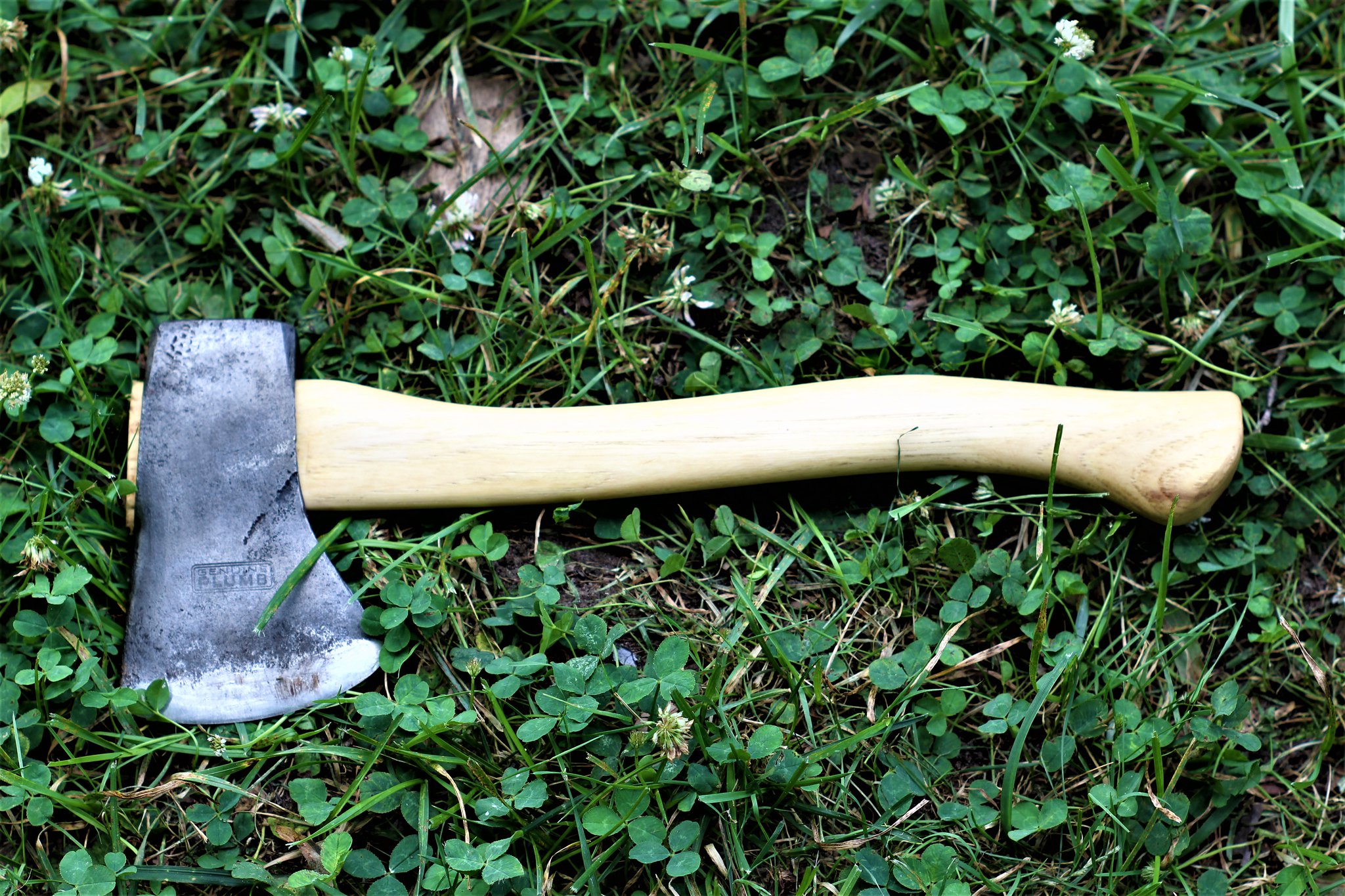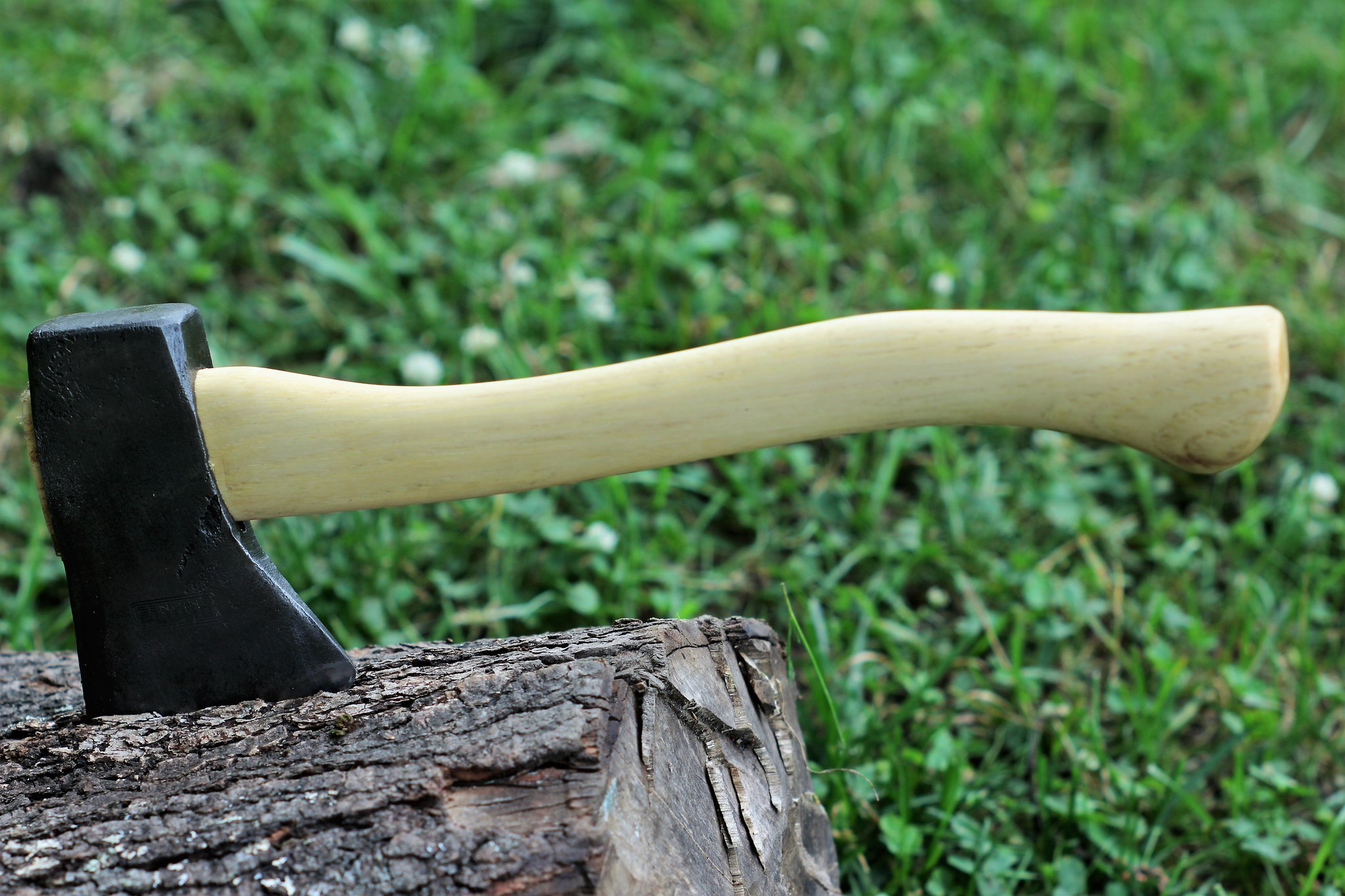- Joined
- Jun 25, 2017
- Messages
- 908
x
Last edited:
The BladeForums.com 2024 Traditional Knife is available! Price is $250 ea (shipped within CONUS).
Order here: https://www.bladeforums.com/help/2024-traditional/
HRC 65 does seem impossiblty hard for an impact tool.
Not really, I can honestly say, but it depends on the tool: A hewing axe as is only used for an up or down motion. There is nog sideways play whatsoever. We you cut down a tree there is always some sideways play. Thats why axes snap that are to brittle. This thing wil even chop knots.
For most users though: I wouldn't recommend 65. You have to treat it with a lot of respect in order for it to work like you want. The same with racing axes: They can work in normal trees, but you have to be on you guard to not abuse them.
It was more a comment on how the an ax that hard would hold up under different stresses.I wouldn't do that. Its a hewing axe, why would you want to use it for limbing?
I'm more of a Felling, limbing, bucking and splitting and burn it kind of guy.For your info: Thats the French style of doing it
Very tricky. I couldn't get it done with the set up I had. And I believe you need to file down to fresh steel. The test method that the FSS specifications call for involved cutting the axe head. There is a scratch test but I believe it will just get you in the ball park.Thanks, Kevin. They do show up now.
HRC 65? That is old school straight razor territory. No disrespect intended, but do you trust whomever made those readings? With angled surfaces it can be a little tricky.
I have seen the European yew and I can't visually tell the difference. I have not worked with the European stuff, it's been reported by those that have that it is the same.It is over here. But I don't know f there is a difference in European or American Yew?
Best handle material ever, since it was kind of a test. It tends to be springy (they used to make English longbows auto of that stuff), but hard the same time. So it very resilient, and does not have a lot of shock (least i've ever felt actually). The problem is: It's kind of expensive en hard to come by. For one handed axes (its about 55cm long) die ring shape on the underside works wonders, since you can "roll"it with your wrist, giving it a the more cutting power.
Yes I trust them, since it happens to be me.File tested. I was surprised the first time too, but the thing is: It has a bevel of roughly 20 degrees, weighs about 6 pounds, and i use it one handed. So it kinda has to be that hardness in order for it to work. It works fine though, since there not wall hangers but users. I've made the table where the axes ar laying on with it. Try hewing yew with a softer axe with more bevel: It wouldn't work. Let alone things like azobe (iron wood?)
Not really, I can honestly say, but it depends on the tool: A hewing axe as is only used for an up or down motion. There is nog sideways play whatsoever. We you cut down a tree there is always some sideways play. Thats why axes snap that are to brittle. This thing wil even chop knots.
For most users though: I wouldn't recommend 65. You have to treat it with a lot of respect in order for it to work like you want. The same with racing axes: They can work in normal trees, but you have to be on you guard to not abuse them.
 BSA National Side by MJGEGB, on Flickr
BSA National Side by MJGEGB, on Flickr BSA National BSA Stamp by MJGEGB, on Flickr
BSA National BSA Stamp by MJGEGB, on Flickr BSA National Profile by MJGEGB, on Flickr
BSA National Profile by MJGEGB, on Flickr BSA National Side in Block by MJGEGB, on Flickr
BSA National Side in Block by MJGEGB, on FlickrVery tricky. I couldn't get it done with the set up I had. And I believe you need to file down to fresh steel. The test method that the FSS specifications call for involved cutting the axe head. There is a scratch test but I believe it will just get you in the ball park.
